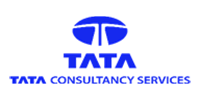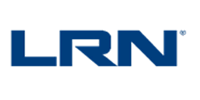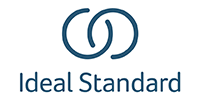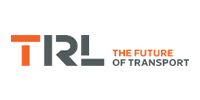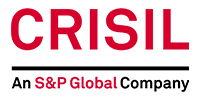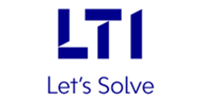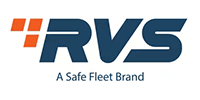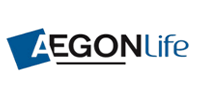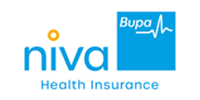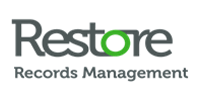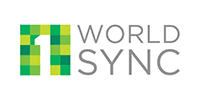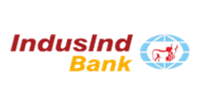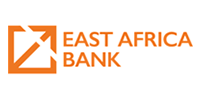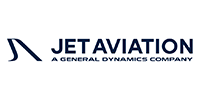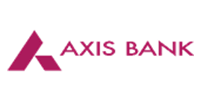| Key Features |
Benefits |
Indusface |
Imperva |
Asset Discovery |
|
|
External Asset Discovery |
Discover external facing assets for an organisation so no asset reamains unprotected. |
|
-- |
Unlimited On-demand Scans |
Ability to demand external asset scan for organisation at any time | .
|
-- |
Risk Detection |
|
|
Managed Application Security Scanning |
AppTrana automatically scans your site for OWASP Top 10 vulnerabilities |
|
-- |
Full Support of HTML5 , AJAX and JSON |
Support to Scan JSON , AJAX and HTML5 based sites |
|
-- |
Remidiation Guidance to fix vulnerabilities |
Get detailed information on how to fix the vulnerabilities |
|
-- |
Vulnerability Revalidation Checks |
Fix the vulnreabilities and have it quickly revalidated to know if vulnerabilities are properly addressed |
|
-- |
Guided scans |
Guided Scans can be enabled to ensure automated scans reaches pages that other scans cannot |
|
-- |
Authenitcated scans |
Provide authentication details and have scans be done behind authenticated pages |
|
-- |
Proof of concepts |
Get proof of concept for the vulnerabilities, enabling teams to prioritise work on right vulnerabilities |
|
-- |
Pen-testing by experts* |
Have experts ethically hack your sites and find business logic vulnerabilities |
|
-- |
Risk Protection |
|
|
Layer 7 Protection |
Get AppTrana be in line to your website traffic and have it inspect traffic and allow only legit traffic to your site |
|
|
Virtual patching through advance security rules |
Have assured Zero false positive rules protecting OWASP Top 10 vulnerabilities out of the box |
|
|
Platform specific rule set |
Have rules enabled written specifically for platforms like Joomla, WordPress etc.. |
|
|
Restrict by IP & Geo |
Quickly block IP & Geo based on traffic patterns |
|
|
Whitelist URI |
Whitelist URI, to ensure that certain critical URI are not blocked accidentally |
|
|
Self Learning Behaviourial Rules |
Have rules automatically become aggressive based on traffic patterns |
|
|
Risk Prioritization |
Portal provides clear view of vulnerabilities that is protected, that can be protected and which needs fix in code, allowing application owner prioritize critical bugs for development |
|
-- |
Malware File Upload Protection |
Restricting file uploads and type of file uploads that can be permited to avoid upload of malicious files |
|
-- |
PCI DSS 3.2 Compliance. |
AppTrana is PCI Compliant and enables you to meet PCI DSS 6.6 compliance cost effectively |
|
|
Origin Protection |
Protection of Origin by providing ability to whitelist AppTrana IPs and block rest to ensure origin is not directly attacked. |
|
-- |
Packet Size Detected |
Inspection of payload of 100 MB and more |
|
2MB |
DDOS Mitigation |
|
|
Protection against Layer 3 & 4 attacks |
Always on Protection against Layer 3 & 4 attacks. |
|
|
Protection against large volumetric Layer 7 attacks
|
Always on Protection against Layer 7 that is able to observe large volumetric attacks seamlessly
|
|
|
Geo-based DDoS Controls |
Provide DDoS policy controls at Geo level with ability to set various limits for users from different regions |
|
-- |
Behaviour Based Layer 7 Protection |
Protection against Layer 7 attacks using unique behaviourial analysis going beyoind simple rate limts |
|
-- |
Captcha challenges |
Enable Captcha’s so that suspected traffics are challenged to ensure automated attacks are blocked |
|
|
Protection of origin IP address against DDoS attacks |
Origin IP is protected against DDOS and forcing all traffic goes through WAF |
|
-- |
Protection against Hot-Linking |
Protect against bandwidth and resoure being used by other unwanted assets on Internet |
|
|
URI Based BDDoS Attack |
Configure granular DDoS controls for critical assets of the application |
|
|
Customize BDDoS behaviour |
Get control on how long certain policies should block |
|
|
Scalable Infrastructure |
Highly Scalable Infrastructure to handle sudden surge of attacks |
|
|
BOT Mitigation |
|
|
Allow Good bots & Block Bot Pretender |
Check for bots that are pretending as good bots and block those |
|
Add-On |
User Agent Based Detection |
Checking for known malicious bots based on UA of requests and blocking or increasing risk score of identity |
|
Add-On |
Suspicious Countries |
Checking for countries where requests are coming from and increase risk score if it is from suspicious countries |
|
Add-On |
Tor IP based detection |
Check if request is coming from TOR clients and increase the risks score |
|
Add-On |
IP Reputation based protection |
Check the IP reputation of connecting clients and increase risk score based on reputation |
|
Add-On |
Validation of bot signatures and blocking bad bots |
Validate requests for known bad bot signatures and block them |
|
Add-On |
Datacenter Based Detection |
Check if clients are connecting from a datacentre and increase risk score if they are |
|
Add-On |
Scanner /Exploitable tools Checks |
Check if scanners or other automated exploitation tools are connecting and block those |
|
Add-On |
Web Scrapper Checks |
Check if known web scrappers are connecting and block those |
|
Add-On |
Anomaly Behaviour Detection |
Identify anomalous behaviour of bots and increase risk score |
|
Add-On |
Risk monitoring |
|
|
Guaranteed search engine access |
We ensure that genuine search engines are not blocked |
|
|
False positive monitoring |
Get experts monitor the CRS for false positives & have rules tweaked to your site to ensure zero false positive |
|
-- |
Premium rules |
Premium rules which blocks complex layer 7 rules. Have them enabled after false positive monitoring |
|
|
DDoS Notification
|
Get immediate alerts on any abnormal spike in traffic to the site
|
|
|
Premium DDoS mitigation
|
Get complex DDoS attacks mitigated through expert monitoring and customized rules based on attacks
|
|
-- |
Custom rules made by experts
|
Complex business logic vulnerabilities can be protected through experts written rules |
|
-- |
Zero-day rule set
|
Get instantaneous protection for zero-day vulnerabilities through continuous updates written by experts |
|
|
Instant customization and propagation of security rules |
Rules can be pushed instantly and propagated throughout the infra.
|
|
|
24X7 management by certified application security experts
|
Real time incident monitoring, response and reporting
|
|
|
Continous Updates of Rules
|
Constant monitoring of emerging threats and update of Rules as needed
|
|
|
Site Availability Notification
|
Notification of Site availablility and notification in case of unavailability of sites
|
|
|
License Utilization Notification
|
Notification in case of pending expiry of service
|
|
|
Attack Anomaly Notification
|
Notification in case of surge of attacks
|
|
|
Latency Monitoring
|
Monitoring of round trip time and notification in sudden increase in average round trip time
|
|
-- |
Training
|
Training of customer team on WAF and other features in AppTrana
|
|
|
Named Account Manager
|
A single point account manager who handles the entire account and represents customer internally to accelerate solutions
|
|
|
Quaterly Service Review
|
Review done by Account Manager on utilzation of service and explanation of recent updates made
|
|
|
API Security
|
|
|
Managed API Scanning
|
Automated Scanning of APIs for OWASP Top 10 API Threats and more
|
|
-- |
API definition Support
|
Support to understand APIs by parsing postman files to enable API Scanning
|
|
-- |
API Discovery |
Disovery of APIs based on traffic
|
|
Add-On
|
Open API Documentation
|
Auto creation of swagger documentation for API discovered
|
|
Add-On
|
Auto creation of Positive security model for APIs
|
Positive security policies created from Swagger files
|
|
Add-On
|
API specific WAF policies
|
Specific Rules to protect against Top 10 API Threats
|
|
Add-On
|
Shadow API Discovery
|
Discovery of APIs that are not part of swagger definition but request served by API Server
|
|
Add-On
|
Behaviour Based DDOS Protection for APIs
|
Granular BDDOS Policies for critical APIs
|
|
-- |
API Specific BOT detections
|
API specific BOT policies
|
|
|
Whole Site Acceleration |
|
|
Carrier grade CDN |
With the world’s 4th largest, wholly-owned Tier-1 IP back- bone network: TATA Communications Whole site Acceleration reduce latency to ensure content reaches users in the shortest possible time |
|
|
Content optimization
|
Accelerate site content through optimization techniques like minification, auto-compression etc.
|
|
|
Automatic static content caching
|
Cache static contents like images, java script files and CSS
|
|
|
Dynamic content caching
|
Cache dynamic contents by enabling advance caching.
|
|
|
Manual cache purge
|
Cache items can be instantly purged through the portal
|
|
|
Custom cache header
|
Advance caching policies can be crafted using url parameters, file paths
|
|
|
Adv Profiling
|
Profiling of site and improving caching to reduce load on servers
|
|
|
Image Optimzation
|
Optimzation of Images to improve performace of pages which are heavy on Images
|
|
|
Other Features
|
|
|
Analytics Page |
Analytics Page to analyse traffic logs for the site |
|
|
Standard Reports
|
Detailed Executive , site level and scan reports
|
|
|
Integration into 3rd party CDN
|
AppTrana is CDN agnostic and will work seamlessly with any CDN
|
|
|
360* visibity into application security posture
|
With integrated Scanner and WAF, we provide a comprehensive view to the application risk posture
|
|
-- |
Highly available and scalable architectue
|
Infrastructure that scales seamlessly to handle million's of requests concurrently.
|
|
|
Custom Port
|
Support for Custom Ports in Application
|
|
-- |
WebSockets
|
Support for Application passing traffic through Websockets
|
|
|
HTTP v2
|
Support for HTTP v2 protocol
|
|
|
Zero downtime onboarding
|
Entinre onboarding is done in few minutes with zero downtime for the site. Protection starts on day zero
|
|
|
RBAC
|
Role Based access control to customers
|
|
|
2FA
|
2 factor authentitcation
|
|
|
SIEM
|
SIEM APIs to integrate with any SIEM customer has for real time access to data
|
|
|
Bypass mode
|
Retain complete control of the site and have ability to bypass AppTrana with a single click
|
|
-- |
Log mode
|
Have ability to have all rules in log mode and monitor logs to ensure no false positives
|
|
|
Real-time logging
|
Get real time access to logs and ensure quick notification and action in case of attacks
|
|
|
Support |
24/7/365 support through phone, chat and emails, backed by guaranteed response time SLA
|
|
|



